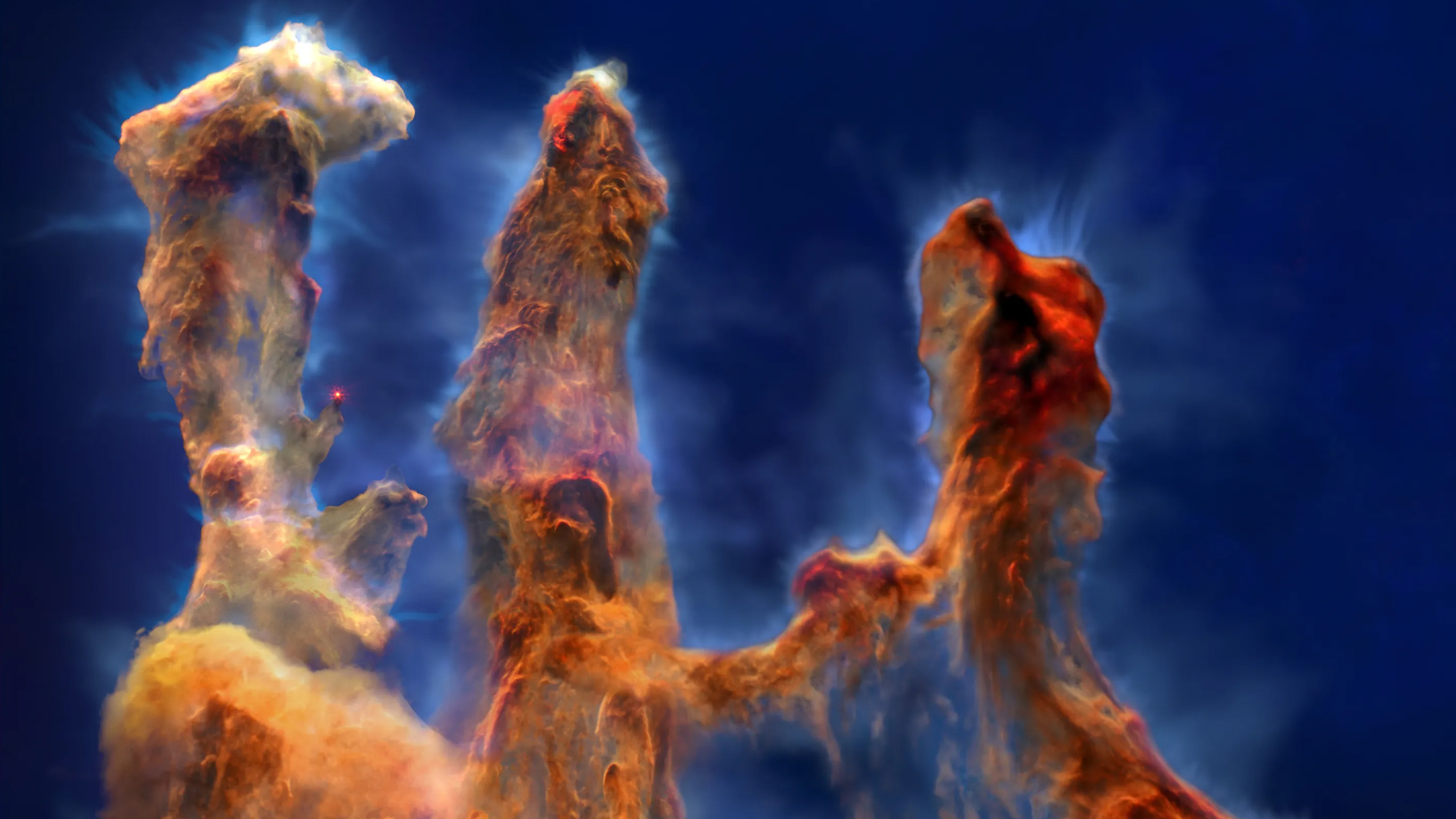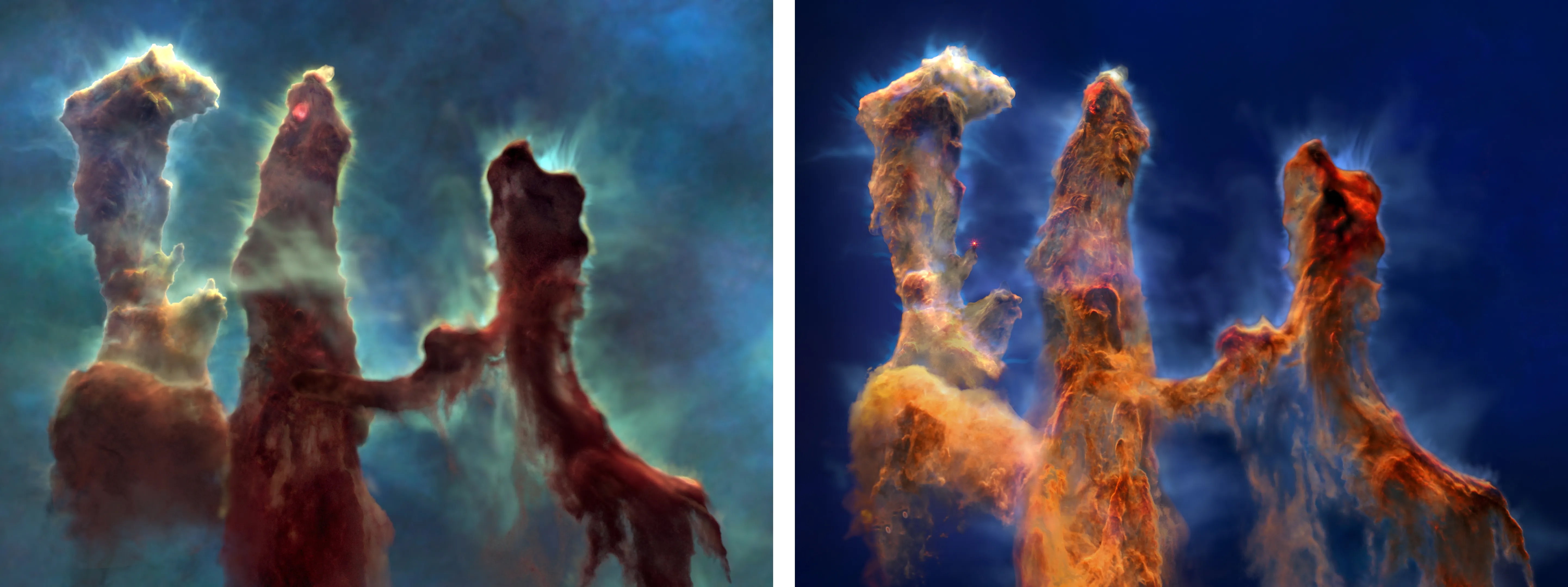
The Pillars of Creation is a world-famous photograph captured in 1995 by the Hubble Space Telescope of Elephant Trunks of interstellar gas and dust in the Eagle Nebula.
Sitting in the Serpens constellation about 6,500 to 7,000 light years away from Earth, these Elephant Trunks are phenomenons that stand light years tall, made of interstellar matter found in molecular clouds.
The stunning celestial formations captured the attention of the world in 1995 and, now, NASA has released a new 3D visualization of the towering space structures using imaging data from the Hubble and James Webb telescopes.
“This is the most comprehensive and detailed multiwavelength movie yet of these star-birthing clouds,” explained NASA.
"By flying past and amongst the pillars, viewers experience their three-dimensional structure and see how they look different in the Hubble visible-light view versus the Webb infrared-light view," explained principal visualization scientist Frank Summers of the Space Telescope Science Institute (STScI) in Baltimore, who led the movie development team for NASA's Universe of Learning.
"The contrast helps them understand why we have more than one space telescope to observe different aspects of the same object."

The film takes viewers right into the heart of the three-dimensional structures of the pillars. The footage is not an artistic interpretation, but based on actual observational data from a science paper led by Anna McLeod, an associate professor at the University of Durham in the UK.
The team at NASA combined observations from the two telescopes across different wavelengths of light, “to broaden our understanding of the universe,” said Mark Clampin, Astrophysics Division director at NASA headquarters in Washington.
“The Pillars of Creation region continues to offer us new insights that hone our understanding of how stars form. Now, with this new visualization, everyone can experience this rich, captivating landscape in a new way."
If you want to take your own images of the stars, why not check out our guide to the best cameras for astrophotography, and the best lenses for astrophotography.
We've also got a guide to the best star tracker mounts for astrophotography.







